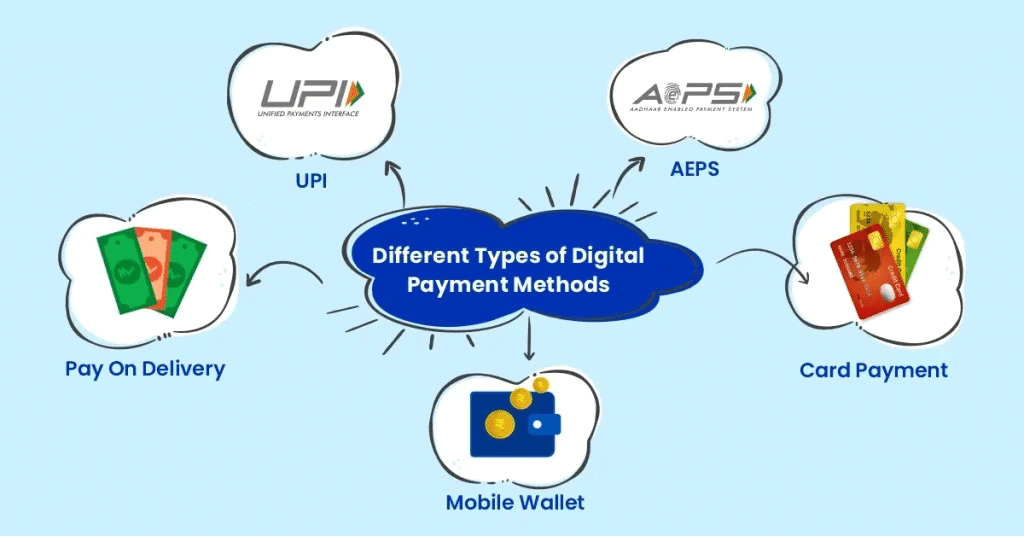Class 7 Exam > Class 7 Notes > Social Science Class 7 - New NCERT > HOTS Questions: Understanding Markets
Class 7 Social Science Chapter 12 HOTS Questions - Understanding Markets
Q1: How did the transition from the barter system to money improve trade efficiency?
- The transition from the barter system to money improved trade efficiency by eliminating the need for a double coincidence of wants.
- In the barter system, two people had to have exactly what the other wanted, which made trading difficult. With money, people could exchange goods and services without needing to find a matching trade partner.
- Money also provided a common measure of value, making transactions simpler and faster.
- Additionally, money is divisible, portable, and durable, allowing for a wide range of trades and better storage of wealth, thus streamlining the exchange process.
 Barter System
Barter System
Q2: Compare physical markets and online markets in terms of their advantages and challenges.
Physical markets and online markets serve similar purposes but have distinct advantages and challenges.
- In physical markets, buyers can directly interact with sellers, touch and feel the products, and make immediate purchases.
- However, these markets require physical presence and time for travel.
- Online markets offer convenience as people can shop from anywhere and have goods delivered to their doorstep.
- However, online markets may lack the immediate tactile experience, and there is a risk of receiving products different from what was expected.
- Moreover, online markets face challenges like high competition and the need for secure digital payments.
Q3: How does the government’s regulation of prices help maintain fairness in markets?
- Government regulation of prices helps maintain fairness by ensuring that essential goods are not overpriced, protecting both buyers and sellers.
- For example, the government sets maximum prices for lifesaving drugs to make them affordable for everyone, especially in emergencies.
- Minimum prices are also set for crops like wheat to ensure farmers earn a fair income.
- Without these regulations, producers might exploit consumers with excessive prices, while consumers might face a shortage of essential goods if prices are too low for producers to continue supplying. Thus, regulation ensures that prices balance the needs of both buyers and sellers.
 Markets in India
Markets in India
Q4: Imagine you are a seller at a weekly market. How would you adjust your pricing strategy to ensure maximum sales?
- As a seller at a weekly market, I would adjust my pricing strategy by observing the demand for my products and considering the price sensitivity of my customers.
- If I notice that many buyers are reluctant to purchase due to high prices, I would reduce the price slightly to make it more affordable, ensuring more sales.
- On the other hand, if the demand is high and my stock is limited, I might raise the price to reflect the scarcity and maximize profit.
- Additionally, I would offer discounts at the end of the day to clear remaining stock, ensuring that I do not end up with unsold goods.
Q5: Justify the importance of market innovation in improving products and services.
- Market innovation is essential for improving products and services because it helps meet evolving consumer needs and enhances competitiveness.
- For example, when consumers demanded more energy-efficient refrigerators, manufacturers responded by designing models that consume less power, thus helping both the environment and consumers save money.
- Innovation also drives the development of new products, like eco-friendly packaging, which appeals to environmentally conscious buyers.
- This continuous improvement not only benefits consumers but also allows businesses to stay relevant in a competitive market, ultimately leading to higher satisfaction and economic growth.
 Online Payment Methods
Online Payment Methods
Q6: Predict the impact of digital payment systems, like UPI and QR codes, on traditional markets in the next decade.
- The impact of digital payment systems, such as UPI and QR codes, on traditional markets over the next decade will likely be significant. As digital payment methods become more accessible and trusted, they will make transactions faster, safer, and more efficient.
- This shift will lead to fewer cash transactions in traditional markets and could even encourage more online shopping, as people become accustomed to the convenience of digital payments.
- Moreover, traditional markets will need to adapt by incorporating digital payment methods, allowing vendors to reach a broader customer base.
- Over time, this could result in the decline of cash-only businesses and a transformation of the way goods and services are exchanged in markets.
Q7: Design a plan to increase consumer awareness about product quality in markets. What steps would you take to ensure that consumers make informed purchasing decisions?
To increase consumer awareness about product quality in markets, I would design an educational campaign that includes both online and offline strategies.
- I would collaborate with local businesses and government bodies to display quality certifications (such as ISI, FSSAI) clearly on products, educating consumers about the significance of these marks.
- I would organize workshops and community meetings where consumers can learn how to assess product quality through labels, reviews, and certifications.
- I would create a mobile app or website that allows users to scan barcodes and receive information on product quality, ingredients, and ratings.
- Finally, I would encourage peer reviews and word-of-mouth recommendations to help buyers make informed choices.
The document Class 7 Social Science Chapter 12 HOTS Questions - Understanding Markets is a part of the Class 7 Course Social Science Class 7 - New NCERT.
All you need of Class 7 at this link: Class 7
|
23 videos|204 docs|12 tests
|
FAQs on Class 7 Social Science Chapter 12 HOTS Questions - Understanding Markets
| 1. What are the key features of a market? |  |
Ans. A market is characterized by several key features: it brings together buyers and sellers, determines the price of goods and services through supply and demand, facilitates competition among sellers, and provides a platform for the exchange of goods, services, and information.
| 2. How do supply and demand affect prices in a market? |  |
Ans. Supply and demand are fundamental concepts that influence prices in a market. When demand for a product increases and supply remains constant, prices tend to rise. Conversely, if supply exceeds demand, prices usually fall. This interaction helps to balance the market.
| 3. What types of markets exist in an economy? |  |
Ans. There are various types of markets in an economy, including perfect competition, monopoly, oligopoly, and monopolistic competition. Each type has distinct characteristics regarding the number of sellers, the nature of the products, and how prices are set.
| 4. Why is competition important in a market? |  |
Ans. Competition is crucial in a market because it encourages efficiency, innovation, and better quality of goods and services. It allows consumers to have more choices and helps to keep prices fair, benefiting both consumers and producers.
| 5. How do government regulations impact markets? |  |
Ans. Government regulations can significantly impact markets by setting rules that affect how businesses operate. Regulations can promote fair competition, protect consumers, and ensure safety, but they can also create barriers to entry for new businesses and influence pricing.
Related Searches





















